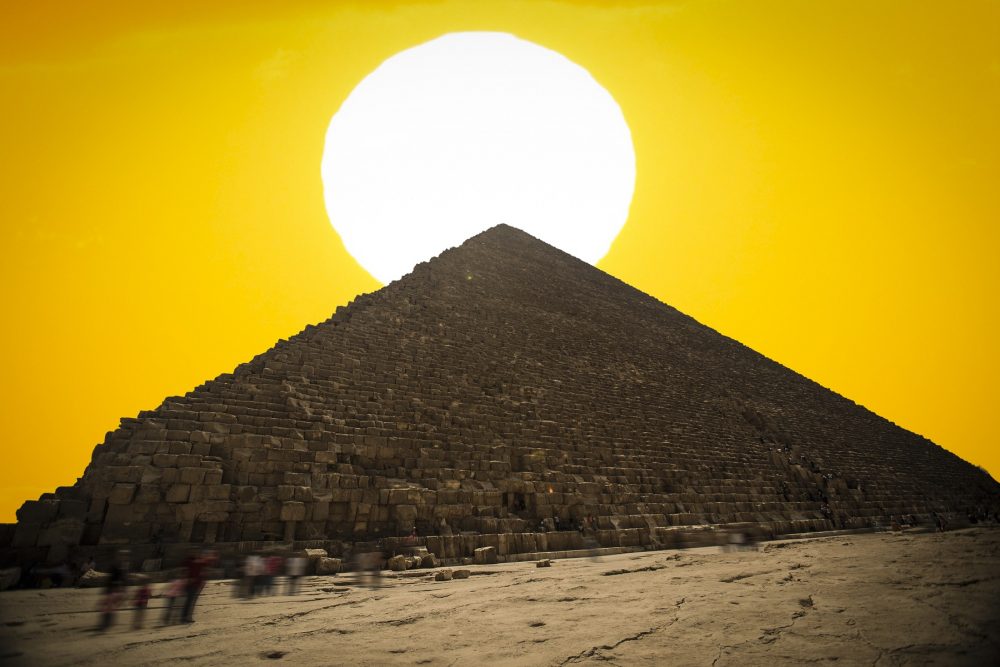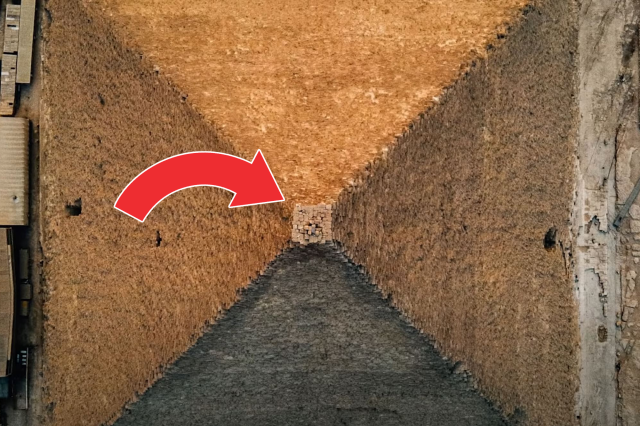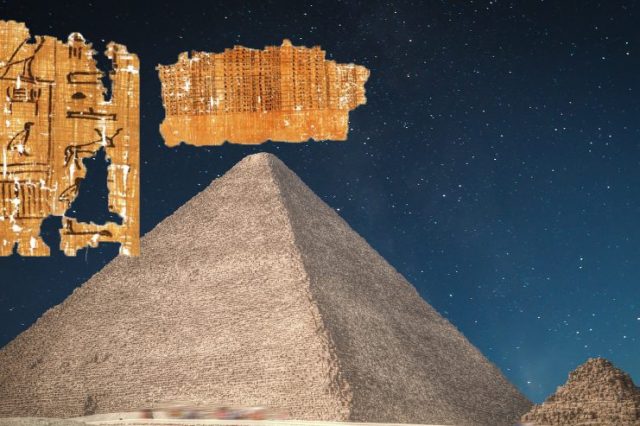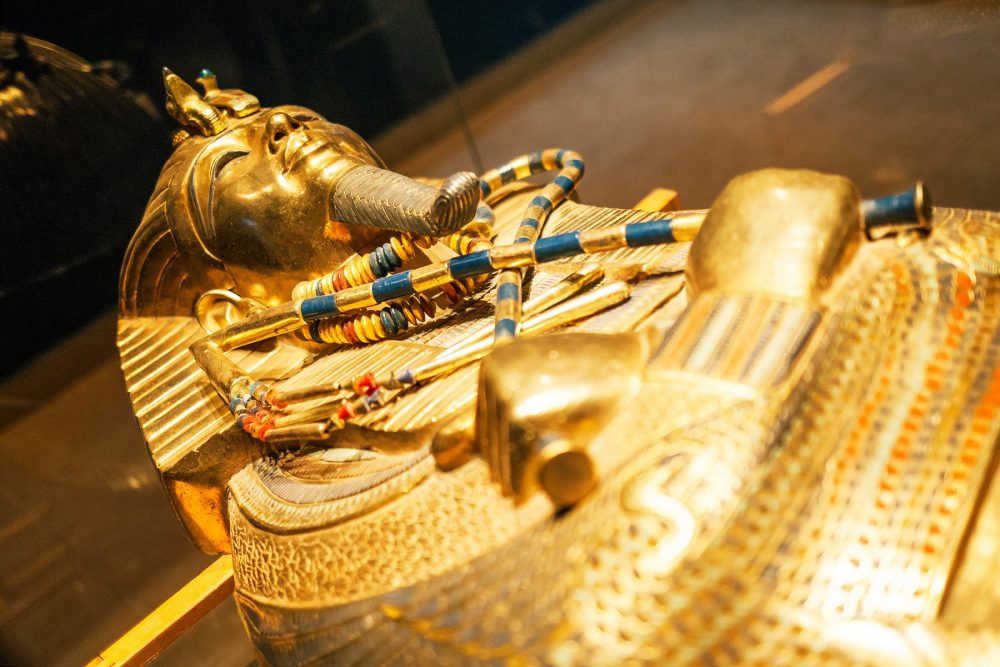According to evidence within the Great Pyramid, the massive jewel of ancient Egyptian history was most likely enlarged as many as three times during construction.
Of all the pyramids on Earth–there are thousands of them scattered across the globe–none is as famous as the Great Pyramid of Giza.
The pyramid does not get its fame because it is the oldest of all pyramids, nor is it the largest of them all. However, not a single ancient monument has captured the interest and imagination of travelers and scholars, as the Great Pyramid of Giza has.
Some people may feel captivated by the Great Pyramid’s massive size; others could say that its peculiar design is what captivates them the most.
But others argue that the mysteries surrounding the pyramid are its most interesting part.
Whatever the case, the Great Pyramid of Giza is an ancient jewel, a masterpiece of ancient engineering marking the peak of ancient Egyptian pyramid building techniques.
Though to have been completed around 4,500 years ago, the Great Pyramid of Giza is widely recognized among Egyptologists as the eternal resting place of Pharaoh Khufu.
It is argued that it took the ancient builders no more than 20 years to complete the structure designed and built by Khufu’s royal Vizier and architect Hemiunu.
At construction, Egyptologists say that the Great Pyramid stood 280 Egyptian Royal Cubits Tall–around 146.5 meters (380.6 ft).
Each base side of the pyramid was 440 cubits, 230.4 meters (755.9 ft) long. Although these numbers may not seem impressive initially, as we delve into more details about the pyramid, the structure reveals its true wonder.
The weight of the Great Pyramid of Giza has been calculated at around 6.5 million tons. The total volume of the Great Pyramid of Giza has been calculated at 2,583,283 cubic meters (91,227,778 cu ft). Not only that but the pyramid of Khufu is regarded as the only eight-sided pyramid in existence.
This unknown yet fascinating detail was first described in La Description de l’Egypte in the late 1700s by Sir William Matthew Flinders Petrie.
I. E. S. Edwards, an English Egyptologist considered to be a leading expert on the pyramids, wrote: “In the Great Pyramid the packing-blocks were laid in such a way that they sloped slightly inwards towards the center of each course, with the result that a noticeable depression runs down the middle of each face — a peculiarity shared, as far as is known, by no other pyramid” (The Pyramids of Egypt, 1975, p. 207).
The Great Pyramid: A Behemoth structure

Interestingly, the Great Pyramid of Giza remained the tallest human-made structure on the planet’s surface for a period of 3,800 years. Its size is bewildering. Experts have calculated that to build the Great Pyramid, more than 5.5 million tons of limestone, 8,000 tons of granite (from Aswan), and more than 500,000 tons of mortar were used.
Each side of the Great Pyramid covers an area of approximately 5.5 acres. This means that the total surface area of the structure is around 22 acres. The pyramid covers a total area of 55,000 m2 or 92,000 ft2.
Khufu is thought to have reigned around 30 to 32 years. The estimated combined mass of around 2,700,00 cu. Meters (95,350,00 cu. ft) for his pyramid, causeway, two temples, the satellite pyramid, and three queen’s pyramids and officials’ mastabas means that the builders of Khufu’s unprecedented construction process had to set in place a mind-bending 230 cu. Meters (8,122 cu. ft) of stoner per day.
This translates into a rate of one average-size block every two or three minutes in a ten-hour day—the stones used in the construction of the pyramid average around 2.5 tons. Nonetheless, much larger and heavier stones were used in the construction process.
Despite this, many people argue that no mere description can do the Great Pyramid justice or even convey an idea of its actual behemoth size.
To try and translate the pyramid’s size into words, have statisticians worked on calculations to compare the pyramid with other well-known monuments through the years.
These painstaking calculations have revealed that the area of the base of the Great Pyramid of Giza would contain the House of Parliament and St. Paul’s Cathedrals while still leaving a large area of unoccupied space.
Other calculations have demonstrated that the base’s area would contain the cathedrals of Florence and Milan, St. Peter’s in Rome, St. Paul’s Cathedral, and Westminster Abbey in London.
If we take the perimeter at the base of the pyramid and multiply it by 43,200, we get 24,734.94 miles—a result short of 170 miles of the true equatorial circumference of our planet.
The Great Pyramid was enlarged at least three times.
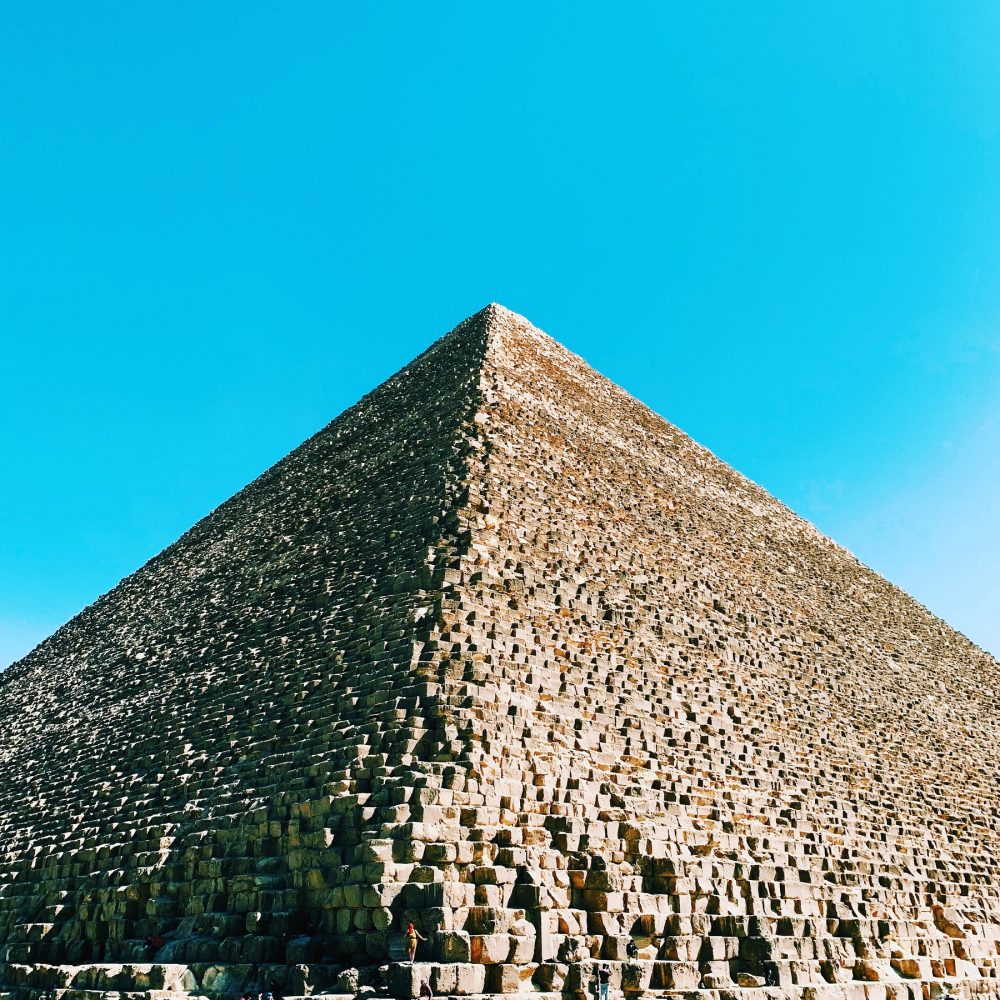
Achieving the size and intricate shape of the Great Pyramid of Giza was no easy task for the ancients.
Egyptologists generally agree that the Great Pyramid of Giza underwent various alterations. This has led many authors to propose that the Great Pyramid of Giza was originally planned on a much smaller scale.
The builders enlarged the structure just before they finished the first room of the pyramid, usually identified as the Pharaoh’s burial chamber.
Accordingly, they conducted an ascending passage 36 meters in length and one meter in height. It leads towards a horizontal passage 35 meters long and 1.75 meters high, which ends in what is incorrectly called the Queen’s Chamber.
Actually, this is regarded as the burial chamber of the pyramid in accordance with the enlarged plan.
At the juncture of the ascending and horizontal passages is an opening of a shaft that descends partially vertically and partially at a very steep angle towards a depth of around 60 meters.
There, it opens into the lower part of the descending passage, a tunnel thought to have been used as an escape shaft for the workmen who filled the ascending passage with massive stones after the alleged burial of the Pharaoh.
Once the massive stone plugs were placed into position, the workers blocked off the ascending corridor remaining trapped forever.
Of the few chambers in the pyramid, the so-called Quen’s Chamber is of great interest. Built entirely of limestone, the room measures 5.2 by 5.7 meters. The maximum height of its roof reaches 15 meters. Both the north and south walls of the chamber have small holes of a few centimeters square, around one meter above the floor.
It is argued that these lead towards narrow channels that originally opened to the pyramid’s exterior; their outer ends are now embedded within the superstructure masonry because of the enlargement of the pyramid.
These are usually referred to by experts as air channels but did not play a role in bringing air to the structure.
Egyptologists argue that these had a religious significance related to the soul of the king.
After building the second chamber inside the pyramid, the builders were tasked with changing the pyramid’s construction one more time. They are thought to have enlarged the structure and built a third, much higher chamber.
The Grand Gallery takes the visitor upward to the room, which is usually acknowledged as the eternal resting place of the Pharaoh.
The exact reason why the ancient builders decided to enlarge the pyramid on several occasions remains an archeological enigma.
Given the lack of ancient texts mentioning the pyramid’s construction, we can only guess why the pyramid was enlarged at least three times.
Join the discussion and participate in awesome giveaways in our mobile Telegram group. Join Curiosmos on Telegram Today. t.me/Curiosmos

